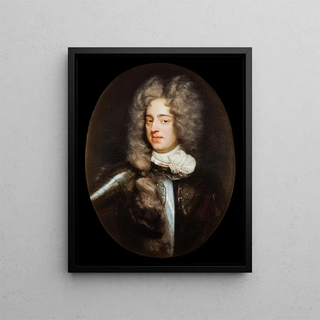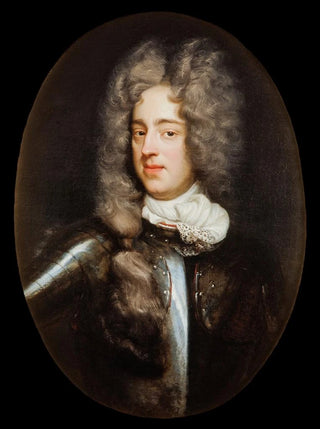Painting Abraham Brahe - David Teniers the Younger | Art print


View from behind

Frame (optional)
In the vast panorama of art history, some works stand out for their ability to capture the imagination and evoke deep emotions. The art print Abraham Brahe - David Teniers the Younger is a perfect example. This piece, illustrating the meeting between science and art, immerses us in a universe where intellectual curiosity and artistic creativity intertwine. Through its subject, it invites us to reflect on the role of astronomers in understanding our world, while celebrating the refined aesthetics of the 17th century. Teniers' work, with its richness of detail and vibrant atmosphere, transports us to a time when each star seemed accessible to the human mind.
Style and uniqueness of the work
David Teniers the Younger's style is characterized by an unmatched mastery of colors and lights, which give his paintings remarkable depth and vibrancy. In "Abraham Brahe," Teniers succeeds in capturing not only the physical appearance of his subject but also his intellectual essence. The composition is carefully orchestrated, highlighting Brahe surrounded by his astronomical instruments, symbols of his dedication to celestial observation. The meticulous details, from the textures of clothing to the reflections of the instruments, testify to a concern for realism that is the signature of the artist. Furthermore, the color palette, oscillating between warm tones and darker shades, creates an atmosphere that is both intimate and solemn, inviting the viewer to immerse themselves in the world of astronomy.
The artist and his influence
David Teniers the Younger, born in 1610 in Antwerp, is one of the most influential artists of his time. As a member of the guild of painters in Brussels, he established himself through his talent and his ability to capture daily life as well as moments of intellectual reflection. His work is marked by particular attention to detail and a capacity to depict narrative scenes with remarkable fluidity. Teniers also played a key role in disseminating the scientific ideas of his era, incorporating figures like Abraham Brahe into his compositions. His influence extends

Matte finish

View from behind

Frame (optional)
In the vast panorama of art history, some works stand out for their ability to capture the imagination and evoke deep emotions. The art print Abraham Brahe - David Teniers the Younger is a perfect example. This piece, illustrating the meeting between science and art, immerses us in a universe where intellectual curiosity and artistic creativity intertwine. Through its subject, it invites us to reflect on the role of astronomers in understanding our world, while celebrating the refined aesthetics of the 17th century. Teniers' work, with its richness of detail and vibrant atmosphere, transports us to a time when each star seemed accessible to the human mind.
Style and uniqueness of the work
David Teniers the Younger's style is characterized by an unmatched mastery of colors and lights, which give his paintings remarkable depth and vibrancy. In "Abraham Brahe," Teniers succeeds in capturing not only the physical appearance of his subject but also his intellectual essence. The composition is carefully orchestrated, highlighting Brahe surrounded by his astronomical instruments, symbols of his dedication to celestial observation. The meticulous details, from the textures of clothing to the reflections of the instruments, testify to a concern for realism that is the signature of the artist. Furthermore, the color palette, oscillating between warm tones and darker shades, creates an atmosphere that is both intimate and solemn, inviting the viewer to immerse themselves in the world of astronomy.
The artist and his influence
David Teniers the Younger, born in 1610 in Antwerp, is one of the most influential artists of his time. As a member of the guild of painters in Brussels, he established himself through his talent and his ability to capture daily life as well as moments of intellectual reflection. His work is marked by particular attention to detail and a capacity to depict narrative scenes with remarkable fluidity. Teniers also played a key role in disseminating the scientific ideas of his era, incorporating figures like Abraham Brahe into his compositions. His influence extends
12,34 €






